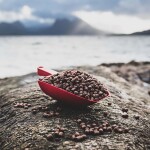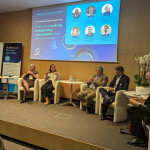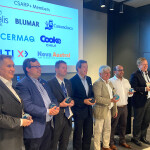Indonesia’s fourth annual International Coastal Tuna Business Forum (ICTBF) will be held 26-27 May 2015 at the Nusa Dua Convention Centre in Bali. Supported by the International Pole & Line Foundation (IPNLF), the event will bring together representatives from all stages of the supply chain, government officials, scientists and other stakeholders looking to bring a sustainable future for the country’s tuna fisheries. Among the discussions, delegates will hear about important commercial topics such as international market opportunities and access requirements, as well as updates from fishery improvement projects (FIPs) and updates following the completion of the new National Tuna Management Plan (NTMP). They will also learn how a raft of new policies, supported by the nation’s new president and fisheries minister, will aim to protect and revitalize all of its fisheries.
Hon. Saut P Hutagalung, the Republic of Indonesia’s Director General for Fisheries Product Processing and Marketing at the Ministry of Marine Affairs and Fisheries (MMAF), discusses the positive effects of the country’s International Coastal Tuna Business Forum and the evolution of its pole-and-line and handline sectors.
Q: Why are the forums important for Indonesia’s tuna industry?
SH: Indonesia is the largest tuna producer in the world and these annual forums provide excellent opportunities for us to promote the country’s tuna pole-and-line and handline fisheries and show the ways in which they are being managed to an international audience. In terms of global marketing, this is a very important annual event.
Q: The next forum in May will be the fourth edition. In what ways have the previous three events had an impact on Indonesia’s tuna fisheries?
SH: Both the Indonesian tuna industry and international markets have responded very positively to the forums. The number of international tuna buyers attending them has grown steadily from event to event. They have enabled Indonesian producers and exporters to establish more contacts in the marketplace and our tuna industry is really starting to benefit from those relationships.
The industry is becoming increasingly internationally orientated and now looks very closely at global requirements when it comes to tuna marketing within the supply chain. This has meant we have become more committed to achieving international standards of environmental safety and traceability.
Going back to the first forum, proceedings were very much focused on accelerating the economic development in disadvantaged coastal communities, particularly in the eastern part of Indonesia. There has been a steady evolution from the first to second to third forums thanks to the participants, speakers and discussions that have taken place. The ministry, along with the IPNLF, is seeing a growing eagerness to progress from the Indonesian industry.
We also now have the pole and line and handline association, Asosiasi Perikanan Pole & Line dan Handline Indonesia (AP2HI), which has resulted in even faster development within the industry. The association was inaugurated in the first-quarter of 2014 and the IPNLF played a very large role in delivering that. It represents Indonesia’s pole-and-line and handline industry on the ground level.
Membership of the association and interest in it from the tuna players around the country has grown a lot in the past year. I think the main reason for that is the association is helping the industry understand the market requirements for its products.
Q: What are the main aims of this year’s ICTBF?
SH: It is a business forum and so it is an important meeting point for tuna producers, exporters, buyers as well as for international NGOs with an interest in tuna fisheries, and so we will naturally look at any market or internal concerns that we might have. Beyond that, we would of course like to see an increase in the flow of the tuna trade between the producers, exporters and the buyers.
However, I think one of the biggest aims this year will be to look at ways in which we can better promote the Indonesian tuna industry along with our policies and management plans. From an international standpoint, we want to show how the industry is being managed sustainably and also foster greater industry relations and collaborations with industry associations and NGOs.
Indonesia’s pole and line and handline sectors collectively produce around 120,000 metric tons (MT) of tuna. We are supporting these fisheries and looking to develop them further in the future. It is important we show them that the industry is moving in the right direction.
The ministry has been very pleased to host the past three forums and we hope that the next event in May and the one next year will continue to see the participation of a growing number of international tuna industry stakeholders – to encourage the development of pole and line operations in the future.
Q: How close are Indonesia’s pole-and-line and handline fisheries to achieving Marine Stewardship Council (MSC) certification and what will be the main benefits of this accreditation?
SH: The MSC is something that is quite new to us although we have been in the process for the last five years. However, I believe that thanks to our association with the IPNLF we will succeed in getting certification for both Indonesian handline and pole-and-line tuna within one to two years. Perhaps as the result of a new approach devised by AP2HI we will get the handline tuna certification a little faster.
In having MSC certification, we believe the industry will achieve three important things: Firstly, much better market access for Indonesian pole-and-line tuna; secondly, there is growing belief that there is a premium price attached to high-quality MSC-certified tuna; and thirdly, a number of important consumer associations consider that MSC certification shows better management of the environment, which is good for branding in the marketplace.
It is a learning curve for our producers, particularly with regards to the costs. But the long-term investment towards the marketing of our tuna is undoubtedly a very positive strategy for our products and our industry.
Q: Can you outline any other important plans that MMAF has for Indonesia’s pole-and-line and handline sectors?
SH: Our new minister Ibu Susi is extremely environmentally focused when it comes to marine matters. She has been in office just a few months but has already made it very clear that she very pro-environment when it comes to preserving our marine resources and avoiding any illegal practices within our fisheries.
This provides the ideal opportunity for the nation to really promote and expand the development of its pole-and-line and handline fishing. It is also an ideal time to discuss how best to move this forward on the ground with industry associations and stakeholders. In doing so, I believe we will encourage more coastal communities to come on board and generate stronger environmental awareness, which will protect our tuna fisheries in the long-term.
Q: How important has IPNLF been to the recent development of Indonesian tuna fisheries and the supply chain?
SH: I first became aware of the IPNLF at the first ICBTF. Since then, it has made very strong contributions to the industry, including helping form and develop the AP2HI. It has actively encouraged the local tuna industry and also brought several international players, including buyers, to Indonesia and encouraged them to foster much closer contact with our producers. This has been a massive long-term benefit to us and has made us part of an international tuna community. Lastly, IPNLF should be recognized for helping take our products to a much wider international market as well as to the attention of many major pole and line tuna buyers.






